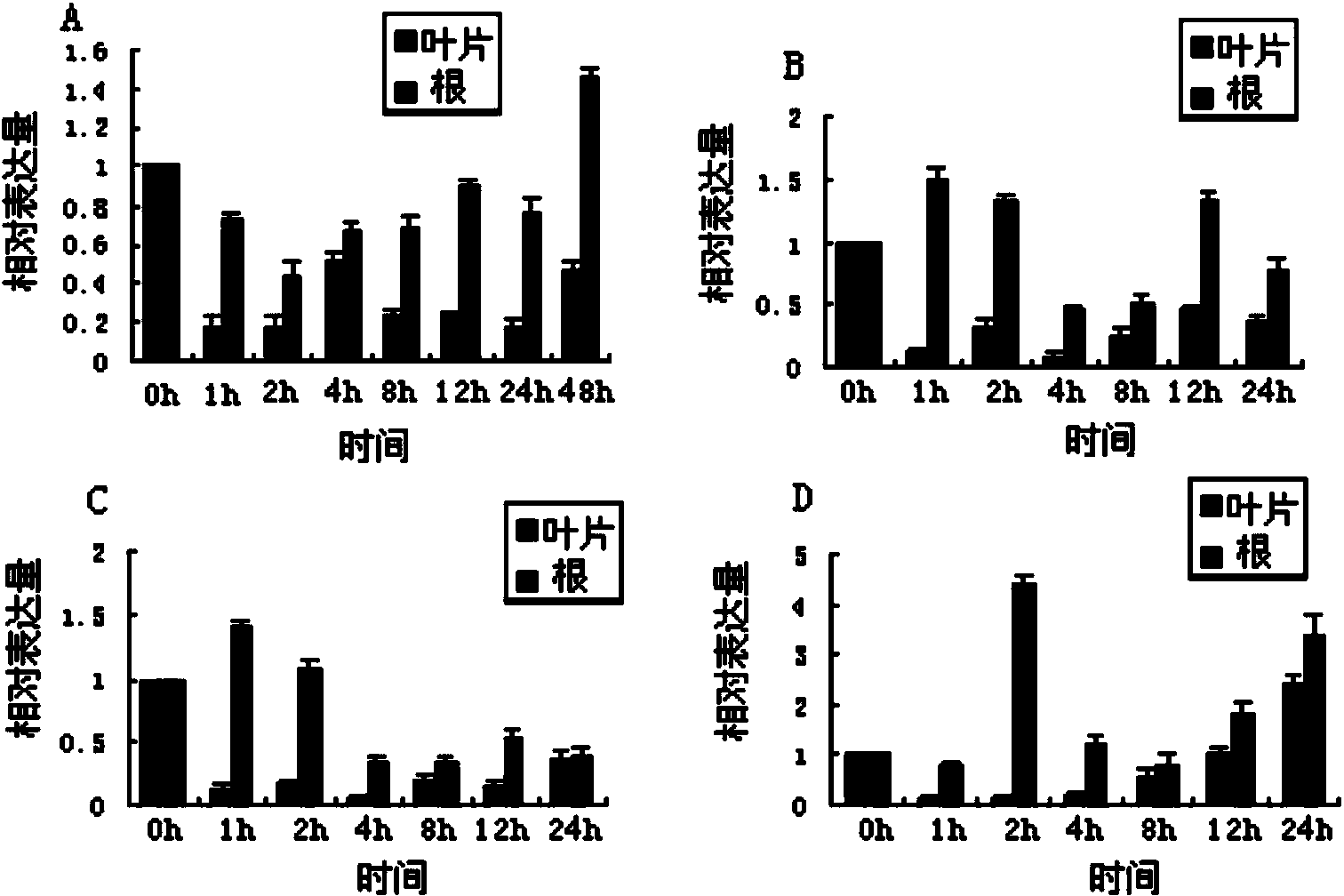Alfalfa adversity stress responsive gene MsNAC2 and application thereof
A kind of alfalfa, gene technology, applied in the field of genetic engineering, can solve the problems of slow growth and low yield, and achieve the effect of improving cold resistance and stress resistance
- Summary
- Abstract
- Description
- Claims
- Application Information
AI Technical Summary
Problems solved by technology
Method used
Image
Examples
Embodiment 1
[0041] Example 1 Acquisition of alfalfa stress response gene MsNAC2
[0042] First, based on the sequences of legume peanut NAC transcription factor genes AhNAC2 and AhNAC3 (EU755023 and EU755022), alfalfa NAC gene homologous primers were designed. The upstream primer sequence was 5′-ACCAAACGGTTCAAG GCCGAACC-′3 (SEQ ID NO.1), and the downstream sequence is 5'-CGATACTCGTGCATGATCCAATTG-'3 (SEQ ID NO. 2). Then, using RT-PCR technology, the sequence of the conserved region of NAC was first amplified from the genome of Medicago sativa.
[0043] 1. Extraction of total RNA from alfalfa: Total RNA was extracted using TaKaRa RNAiso Plus.
[0044] 2. Synthesis of the first strand of cDNA:
[0045] The reaction system is as follows:
[0046]
[0047]The reverse transcription program is: 42°C for 60 minutes, 70°C for 15 minutes.
[0048] 3. PCR reaction:
[0049]
[0050]
[0051] The PCR reaction program was: 94°C pre-denaturation for 5 minutes, (94°C for 10s, 55°C for 20...
Embodiment 2
[0059] Example 2 Real-time fluorescent quantitative PCR detection of expression characteristics of MsNAC2 gene in alfalfa under adversity stress conditions
[0060] The two-week-old alfalfa seedlings were transferred to 250mmol·L -1 NaCl, 10%PEG6000, 100μmol L -1 The stress treatment was carried out in abscisic acid (ABA) MS liquid medium, and the chilling injury treatment was carried out in a 4°C refrigerator. The treatment times of PEG6000, ABA and 4°C were 1, 2, 4, 8, 12 and 24 hours, and the treatment times of NaCl were 1, 2, 4, 8, 12, 24 and 48 hours. After the completion, the total RNA of leaves and roots was extracted respectively, and fluorescent quantitative expression primers were designed according to the full-length cDNA sequence of MsNAC2. The upstream primer sequence was 5-TGGTGAAGATGACCCTTTTGC-3′ (SEQ ID NO: 5), and the downstream primer sequence was 5′-AAGCTCCACTTGCAGTTGCAG -3' (SEQ ID NO: 6). The alfalfa Actin gene (EU664318) was used as the internal refere...
Embodiment 3
[0061] The subcellular localization of embodiment 3MsNAC2 gene
[0062] The MsNAC2 gene was constructed into the fusion expression vector pBIGFP containing the eGFP gene to construct the fusion expression vector pBIGFP-MsNAC2 (see Example 4 for details). Then combined with Agrobacterium-mediated transient expression technology and laser confocal detection technology, the expression vector pBIGFP-MsNAC2 was successfully transformed into onion epidermis. Then the expression site of the gene was observed under a fluorescent microscope, and the carrier pBIGFP without MsNAC2 was used as a control, the results are shown in Figure 4 , where, in the onion epidermal cells transfected with pBIGFP-MsNAC2, only the GFP green fluorescence signal can be observed in the nucleus under ultraviolet light ( Figure 4 in Figure B), Figure 4 Figure A in the figure is a photo of onion epidermal cells transfected with pBIGFP-MsNAC2 under white light; while in the control group, clear green fluor...
PUM
 Login to View More
Login to View More Abstract
Description
Claims
Application Information
 Login to View More
Login to View More - R&D
- Intellectual Property
- Life Sciences
- Materials
- Tech Scout
- Unparalleled Data Quality
- Higher Quality Content
- 60% Fewer Hallucinations
Browse by: Latest US Patents, China's latest patents, Technical Efficacy Thesaurus, Application Domain, Technology Topic, Popular Technical Reports.
© 2025 PatSnap. All rights reserved.Legal|Privacy policy|Modern Slavery Act Transparency Statement|Sitemap|About US| Contact US: help@patsnap.com



